News
The tipping report: How to navigate the 10%
Thursday, June 25th, 2015Each country has its idiosyncratic rules of etiquette. In Malaysia it’s rude to point with your index finger (the thumb, with a closed hand, is preferred); in China it’s vulgar to rest your chopsticks upright in a dish. Burping after a meal, eating everything on a plate, not eating everything, waiting for the oldest person to eat first – it can be tricky to avoid offending someone.
One of the basic tenets of South African culture is tipping the waiter. While in other countries (where professional waiters earn a tidy sum) leaving ‘change’ is seen as poor taste, here the tip probably constitutes most of that waiter’s earnings.
But the topic is anything but easy to navigate. Take a recent reader review as proof: the patron in question tipped R100 on a lavish R4000 meal for four people, and was insulted to have the waiter run after their group to enquire further.

Rebecca is horrified to learn that the freshly squeezed orange juice she ordered hailed from an organic Guatemalan orange farm and hence costs R1000 a glass.
South African Tourism advises that “in restaurants and bars, 10% to 15% is the accepted tipping standard,” and Tripadvisor, in its section on etiquette in South Africa, suggests that “tipping is customarily kept at 10% of the total shown on the bill.” The Portfolio collection by Liz McGrath, a group of fine dining restaurants including former Restaurant of the Year, The Greenhouse, suggests that a tip of 10% to 20% is standard but to check with the manager about a service charge on bigger tables. “If you tip over and above this included charge it is unlikely your error will be pointed out and your tip will be seen as rewarding exceptional service over and above the basic charge.”
Wendy Alberts of the Restaurant Association of South Africa has said that “there’s no such thing as a compulsory tip, but if you spot a service fee on your bill, you’re within your rights to refuse to pay it and then decide for yourself how you’d like to tip your waiter, bearing in mind that 10% is the norm.”
So we can all agree on tipping at least 10%. But somehow the message still isn’t getting through to customers. We asked industry insiders to offer some solutions.
Adding service charges automatically
The manager of a Pretoria restaurant who wished to remain anonymous says that he automatically adds 10% onto all bills – not only for large groups – to protect his staff from bad tippers.

Hint: this is not an acceptable tip.
This method is not necessarily accepted in all quarters. A sure-fire tip might result in complacent waiters; not all restaurants pass that 10% on to the staff; and some customers worry that the service fee won’t be noticed on the bill and they might unwillingly give an extra 10% on top of that. (Horrors!)
Some commentators, like this Mail & Guardian columnist recommend paying cash directly to the waiter as a tip – that way you “have fulfilled your side of an established expectation”, whatever the restaurant’s policy.
Raising the question
Megan Moore, who works as a waitress at a popular Cape Town restaurant, says most customers tip according to the standard or more, with only about 10% (the elderly and tourists) undertipping.
Employing careful phrasing like, “What would you like to make the total?” as a subtle indication that extra gratuity is anticipated, can work quite well.
If it’s a group of six people or more, she adds in the 10% service charge, but it has to be written by hand onto the bill. (This practice is mentioned on the back of the restaurant’s menu.) “If you have a nice vibe with people, they sometimes ask how much they should give extra,” says Megan.
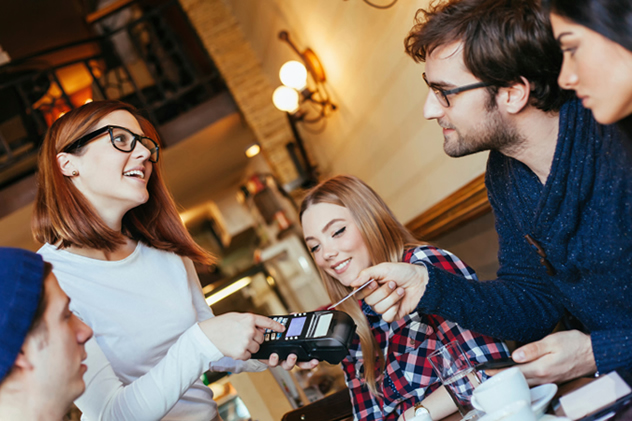
Lucy kindly but firmly declined Kurt’s number in lieu of a tip.
If still no gratuity is forthcoming, she enquires whether there have been any issues and if not, she mentions that it’s “customary” to tip 10%. She’s had a handful of unpleasant experiences with outraged patrons, but they’re usually happy to be set straight.
This practice can draw fire from management, however. Staff can be threatened with a written warning if they harass patrons over bad tips, as cited in this news article.
Opportunities
Joe Pinheiro, one of the owners of Craft Burger Bar in Parkhurst, says that undertipping isn’t really a problem at his restaurant and therefore they don’t add service fees onto bills. “We’ve been fortunate. We have a great client base, and personally I feel that you shouldn’t be prescriptive. It’s your prerogative to tip as much as you want to.”
But Joe says a lack of tip can be useful. “If someone doesn’t tip, there are alarm bells. I’d expect one my managing staff to engage with the customer – not to ask for more money, but to find out (or ascertain via their body language) if there had been a problem and address it.”
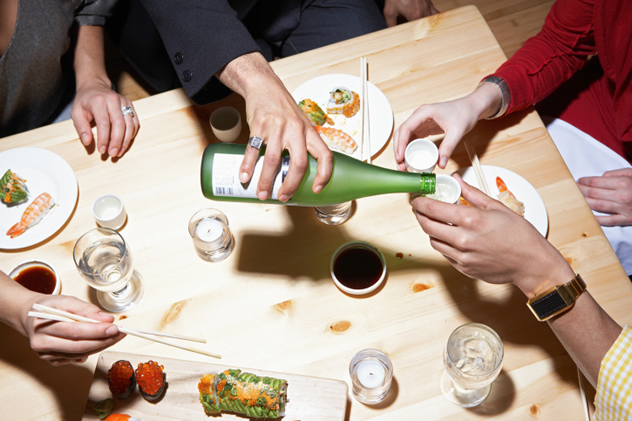
Charles spots an opportunity to steal more than his fair share of rainbow rolls while the waiter pours the sake.
Pappi Kassanda, general manager at Grand Central Café in Melrose Arch, has a similar approach: in the event that someone does not tip, he will approach the table to check if there were any problems with the service. On some occasions, overseas visitors will realise their blunder and apologise. If there is an issue, it gives Pappi the opportunity to address the problem with his staff.
In conclusion, consumer education, fostering friendly interactions between waiters and patrons, and vigilant, supportive management can go a long way to ensuring that great service is rewarded.
Please share your experiences and ideas in the comments section below.




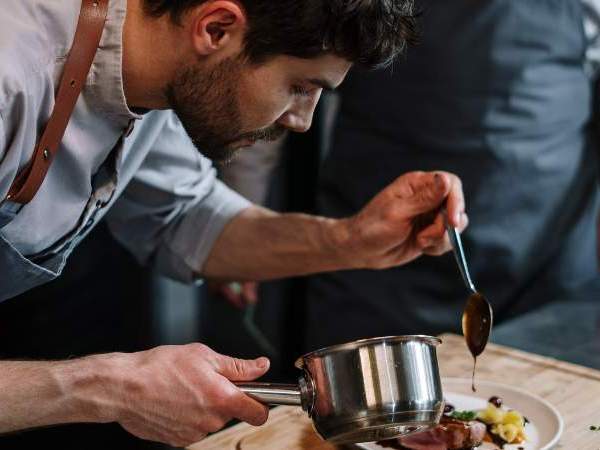
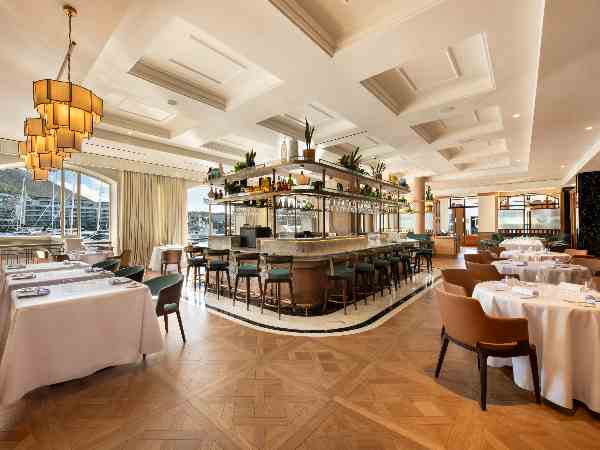
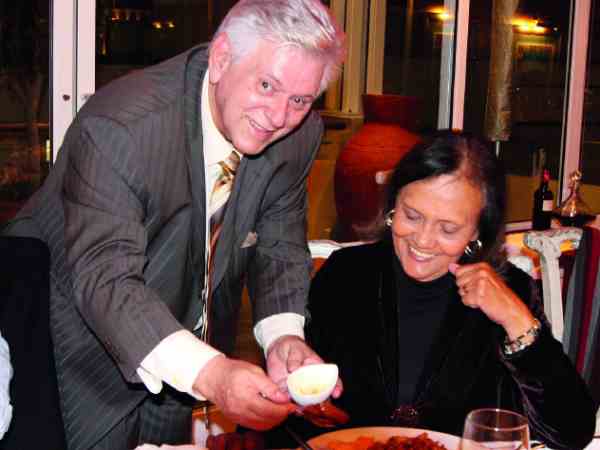



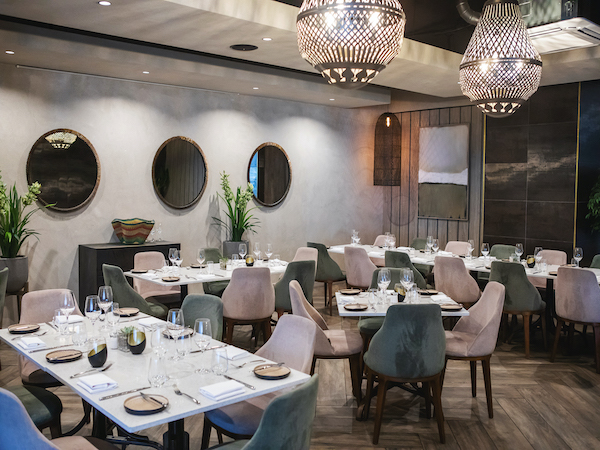


My opinion is that the tip by a patrons should be relative to the service received and not obligatory. I frequent restaurants and almost always give a tip wth the minimum being 10% and if I experienced great service up to 25%. What I noticed recently at a popular pizza restaurant, Cal Cachio, was the inclusion of the 10% as some outlets do. What I did not appreciate and find it rather sneaky is that the amount is not noted at the end of the bill or even separated but somewhere in the middle. Rather obscure placement and can easily be overlooked, resulting in an additional tip to be given. Actually puts me off
Hi “Anonymous”, Craig here from the Col’Cacchio pizzeria head office. In reading your comments about your experience at one of our stores, we very much would like to follow this up with you – as the tip inclusion ‘somewhere in the middle’ of the bill is certainly not something we practice. We would love to get to the bottom of this and would greatly appreciate it if you could get in contact with me at craig@colcacchio.co.za so we can resolve the matter further. Thank you in advance, Craig.
How about if waiters have to abide by a code of conduct, whicn can protect patrons from worrying about their food, if it has to be sent back or there is some query with it.
This way patrons know what to expect from waiters and will be more inclined to tip waiters abiding by the code
I manage a very busy restaurant, and in general, service is great and rewarded with appropriate gratuities. I have however noticed that our waiters, who are all from Zimbabwe, are very loath to serve their local indigenous brothers as they know that firstly the whole xenophobic attitude about Zimbabweans taking jobs from locals influences the attitude of the patrons to their waiters and hence affects their gratuities, and secondly they (waiters) never know if their indigenous brother guests are even aware of the national norm of tipping at the end of their dining experience. We recently had a group in from the Transkei and they were apparently completely oblivious of this “Urban traditon”. When I enquired if they were happy with the service they received, they replied “Yes, fantastic. You must be paying your staff extremely well to get them to perform such beautiful and efficient service.”
I always tip more than 10% going up to 25% in cash if the service is really superior. If service is “acceptable” I will tip 10%. Very often these days there are very very poor waiters/waitresess and often in restaurants that are not that busy I will tip them but very poorly, I feel that as a Patron I am entitled to half decent service from the server, if they give poor service they should not expect a decent tip. I think that is fair?
I do however always try to tip with cash as I know some restaurant owners take the Service fee for card payments off the tip, I may be wrong but I do ask and 99.9% the staff is much happier with cash.
The 1 thing I hate about sit down restaurants is feeling obligated to tip and I especially hate when the waiters tell me its compulsory. If its not stipulated on the menu as such then its NOT compulsory! Heres something I really don’t understand though, we receive a service from many different sectors/industries on a daily basis and many employees are paid worse than waiters however why is it that we only tip waiters and NO ONE else we receive a service from? How badly are waiters paid that they rely solely/mainly on tips & who ever came up with this “rule”? Don’t get me wrong I do tip but I tip what I think is fair!
Hi Jessy, I totally agree with you. People shouldn’t be forced to tip! I’m not tipped for doing my job. The problem of poor salaries it’s not ours. My salary is also a poor salary but I do my best to at least afford restaurants. If your salary as a waiter is not enough then change your career! Don’t put that responsibility on our shoulders. A tip is like a gift, you can’t choose, you have to be thankful because sometimes, that’s all I can give! I find it very ungrateful when waiters complain with a client who tipped them with R20. For some of us, that a lot of money. In my country R20 is 100 and we normally tip our waiters 10 or 20 of the local currency, some don’t even tip but they’ll still treat you with respect and never complain. Imagine how much money I’d spend only on tips if I’m to eat out for every single meal. That 3-4 times a day, it’s too much! A waiter in Nelson Mandela square, told me that 20% for tips was stipulated by law. What I understand from that is that if I don’t pay that 20% they can press charges and I could be punished for not tipping. Can anyone clarify this for me please.
People should get out of the bad habit of tipping.
ALL waiters in South Africa are paid employees (this coming from someone who has worked in the restaurant industry for 16 years).
Do you tip your accountant?
All the waiters do is to take an order, place the order and take the order to the table. The kitchen staff do the hard work and are paid exactly the same as the waiters.
Rather save the tip and come back again.
Its so sad when the management steals waiter’s tips seriously.. having a poor person running up and trying to give the best service as possible to the patrons.. after that patrons tip them ,then the management takes the tips to themselves.. something needs to be done this is really sad and selfish
It’s poor etiquette NOT to tip. I read a lot of comments about people not topping their accounts. Your account makes a shit load of money. Waiters are normally student or youngster starting off in live. I believe in being fair and giving and paying it forward. People that’s to stingy to tip should stay at home….
I do not mind tipping,though I feel like it should be my own choice to do so. I do understand that servers might not be paid well. But I also make enough just to get by.so with all that I have said,tipping should never be compulsory.